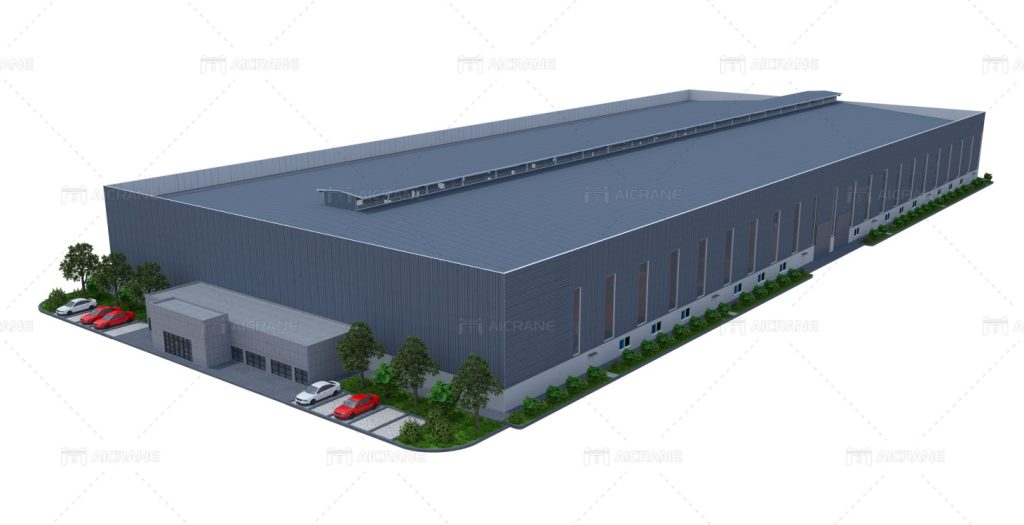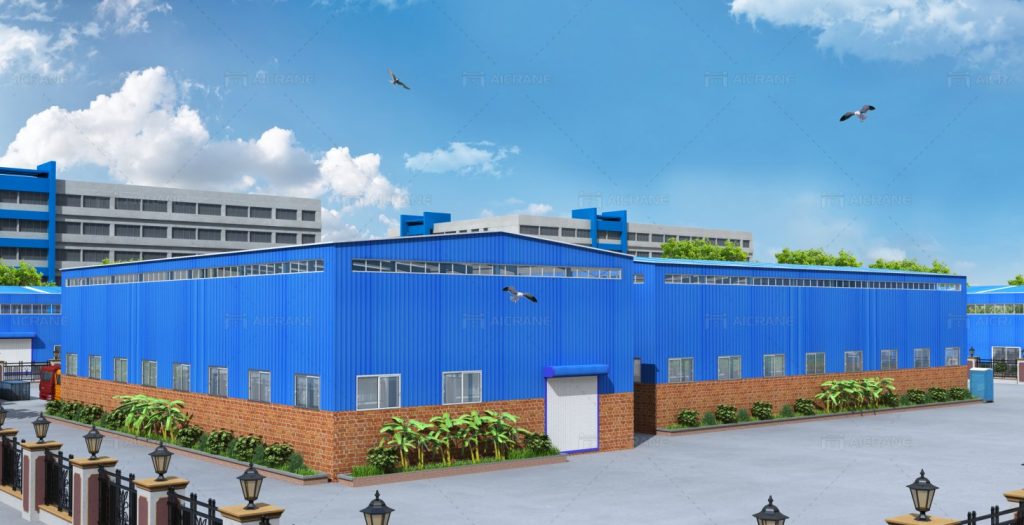In the modern era of sustainable development, green building standards are crucial for reducing environmental impact and promoting resource efficiency. Steel frame warehouses, increasingly popular in various industries, play a significant role in this movement. Their design and construction align with many green building principles, offering advantages that contribute to environmental sustainability. This article explores how steel frame warehouses meet and exceed green building standards, focusing on their environmental benefits, energy efficiency, and overall contribution to sustainable construction.

Environmental Benefits of Steel Frame Warehouses
- Recyclability and Reusability One of the most notable environmental benefits of steel is its recyclability. Steel is one of the most recycled materials in the world, with approximately 85% of steel products being recycled at the end of their life. Steel frame warehouses, constructed with steel components, can be disassembled and repurposed, minimizing waste and reducing the need for new raw materials. This aligns with the principles of a circular economy, where materials are continuously reused and recycled, reducing the environmental footprint of construction projects.
- Reduced Construction Waste The prefabrication of steel components allows for precise manufacturing in a controlled environment, leading to reduced waste during construction. Unlike traditional construction methods, which often result in significant onsite waste, steel frame warehouses are built from pre-cut and pre-fabricated sections. Any excess or offcuts from the manufacturing process are recycled, further minimizing waste. This approach not only conserves resources but also reduces the amount of construction debris sent to landfills.
- Long-Term Durability Steel’s durability contributes to the long-term sustainability of buildings. Steel frame warehouses are resistant to pests, fire, and severe weather conditions, which extends their lifespan and reduces the need for frequent repairs or replacements. This durability ensures that fewer resources are consumed over time, and less waste is generated from maintenance activities. The longevity of steel structures supports the goals of green building standards by promoting the efficient use of materials and reducing the environmental impact associated with building upkeep.
Energy Efficiency in Steel Frame Warehouses
- Thermal Insulation Modern steel frame warehouses are designed with advanced insulation systems that enhance their thermal performance. Proper insulation helps maintain a stable indoor climate, reducing the need for excessive heating or cooling. High-quality insulation materials, such as insulated steel panels, reflective roofing, and energy-efficient windows, contribute to minimizing energy consumption. This not only lowers operational costs but also aligns with green building standards that emphasize energy efficiency and reduced greenhouse gas emissions.
- Natural Lighting Incorporating natural lighting into steel frame warehouse designs can significantly reduce the reliance on artificial lighting. Large windows, skylights, and translucent roof panels allow ample daylight to penetrate the building, reducing the need for electric lighting during daylight hours. This approach not only conserves energy but also creates a healthier and more productive work environment. Effective use of natural lighting is a key component of green building practices, which aim to enhance energy efficiency and reduce the carbon footprint of buildings.
- Renewable Energy Integration Steel frame warehouses are well-suited for integrating renewable energy systems. Their expansive, flat roofs provide an ideal surface for installing solar panels, which can generate clean, renewable energy on-site. Additionally, the structural integrity of steel buildings can support the installation of other renewable energy technologies, such as wind turbines. By incorporating renewable energy sources, steel frame warehouses contribute to reducing reliance on non-renewable energy and lowering overall energy consumption, supporting the goals of green building standards.

Sustainable Construction Practices
- Efficiency in Construction The use of steel frames in warehouse construction promotes efficiency due to the speed and precision of prefabrication. Prefabricated steel components are manufactured off-site, allowing for faster assembly on-site. This efficiency reduces the construction timeline, minimizes the disruption to the surrounding environment, and lowers the overall impact of the construction process. Additionally, the reduced construction time decreases the use of temporary resources and energy, contributing to a more sustainable building process.
- Design Flexibility Steel frames offer significant design flexibility, allowing for the creation of spacious, open-plan layouts that can be easily adapted to different uses. This flexibility supports the principles of sustainable design by enabling the repurposing and reconfiguration of warehouse spaces without the need for extensive modifications. The ability to adapt spaces to changing needs reduces the demand for new construction, conserving resources and minimizing the environmental impact associated with building alterations.
- Low Maintenance Requirements Steel frame warehouses generally require less maintenance compared to other building materials. Steel is resistant to common issues such as rot, mold, and insect damage, which reduces the need for frequent repairs and treatments. This low maintenance requirement contributes to the sustainability of the building by reducing the consumption of maintenance materials and resources over time. Additionally, fewer maintenance activities translate to a lower environmental impact and less waste generated from upkeep tasks. Aicrane steel structure is sustainable and durable, if you want to know more information about the steel structure buildings, you can search Aicrane website and know details.
Certification and Green Building Standards
- LEED Certification Leadership in Energy and Environmental Design (LEED) is a widely recognized green building certification system that evaluates the environmental performance of buildings. Steel frame warehouses can achieve LEED certification by meeting various criteria related to energy efficiency, material sourcing, and sustainable construction practices. The use of recycled steel, energy-efficient systems, and sustainable design elements contribute to a building’s eligibility for LEED certification, showcasing its alignment with green building standards.
- BREEAM Certification The Building Research Establishment Environmental Assessment Method (BREEAM) is another prominent green building certification system that assesses the environmental performance of buildings. Steel frame warehouses can achieve BREEAM certification by incorporating sustainable design features, such as energy-efficient systems, sustainable materials, and effective waste management practices. BREEAM certification highlights a building’s commitment to reducing its environmental impact and promoting sustainability.
- Green Building Codes Many regions have adopted green building codes and standards that mandate specific sustainability criteria for construction projects. Steel frame warehouses that adhere to these codes demonstrate compliance with local regulations and contribute to broader sustainability goals. These codes often include requirements related to energy efficiency, resource conservation, and indoor environmental quality, ensuring that steel frame warehouses meet high standards of environmental performance.
Steel frame warehouses play a pivotal role in advancing green building standards and promoting sustainability in construction. Their environmental benefits, such as recyclability, reduced waste, and long-term durability, align with the principles of sustainable development. Additionally, their energy-efficient designs, integration of renewable energy systems, and support for efficient construction practices contribute to their role as a sustainable building choice. By embracing steel frame warehouses, businesses and developers can achieve significant environmental and economic benefits while supporting the goals of green building standards. As the demand for sustainable construction practices grows, steel frame warehouses will continue to be at the forefront of eco-friendly building solutions, shaping the future of sustainable development.